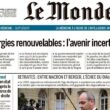Fifty-five years ago next month, the UK’s Daily Mail tabloid became the unlikely creator of Euromoney, the magazine which championed and charted the growth of the Eurobond market. It became the flagship of a global provider of B2B information and events group once worth £2bn.
It built a formidable reputation as a high-performing listed company able repeatedly to counter the advertising cycle of B2B magazines through tight cost control, diversification into events, and highly-successful M&A. For a company focused initially on journalism, it even became very good at selling high-priced advertorials in its publications and sponsorship of its conferences – decades before “content marketing” became the norm. Euromoney also became known among media rivals and investors alike for the generous incentive schemes enjoyed by its leaders.
But it all changed in 2019 when the Daily Mail Group sold its remaining 49% shareholding in Euromoney Institutional Investor Plc, essentially to fund its own de-listing by the founding family. That sell-off proved to be great timing for the news group which had already made an estimated £2bn from its startup investment of £6k.
DMG’s exit was followed by Euromoney’s protracted and abortive attempt to sell its asset management division (which still accounted for more than 30% of group revenue). It had probably been a mistake to try to sell the division as a single business and to reject offers for parts of it. But the pandemic obscured the inquest.
It is tempting to observe that Euromoney was not the first company to have been moulded and managed so effectively by its creators, only for their successors to find themselves with a portfolio of rich but disparate assets and an apparent need for reinvention at the worst time. But it was also a company which – even in halcyon days – had under-invested in products and tech and had a long tail of under-profitable assets. The image of a tired, past-its-best company almost shrouded the M&A value added to the Fastmarkets portfolio of commodity Price Reporting Agencies (PRA) and the Altrata people intelligence group under outgoing CEO Andrew Rashbass.
By 2022, Euromoney had become perfect prey for private equity.
The upshot was its £1.6bn ($1.9mn) acquisition in 2022 by a consortium of two pe funds which split the portfolio between them. Astorg took the £107mn-revenue Fastmarkets and Epiris took the £320mn, sprawling rest of the company (Financial & Professional Services and Asset Management). The total acquisition price was a 34% premium to the previous share price – but also 24% higher than the consortium’s first offer.
That’s where the fun begins.
The key to the Euromoney ‘take private’ had been Astorg’s ambition to acquire Fastmarkets which accounted for 25% of group revenue, 32% of operating profit and 20% of the headcount. It had grown out of Metal Bulletin (acquired by Euromoney for £200m in 2006) and was a PRA pioneer launched in 1913 as a spin-off from The Ironmonger magazine, using prices from the London Metal Exchange. It has been developed rapidly in recent years with pricing acquisitions in agriculture and forest products. Astorg believed there was major potential growth in PRAs, both organically and through M&A.
There may be no doubt about the greater value of that PRA business, with some competitors attracting multiples of up to 30x EBITDA. This, inevitably, propelled Astorg’s deal with Epiris.
While the split between the pe firms of the £1.6bn price for Euromoney has not been disclosed, it is now believed that Astorg paid £735mn for Fastmarkets (24x 2022 profit) and Epiris paid £865mn (13x profit) for ‘the rest of Euromoney’ (now named Delinian).
| Euromoney Plc SnapShot £mn | FY 2022 results | 2022 valuation** | ||||
| Revenue | Op profit* | Margin | Price | xRev | xProfit | |
| Astorg Fastmarkets (500 people) | 107 | 31 | 29% | £1,100 | 10x | 35x |
| Epiris Delinian (2,000 people) | 320 | 66 | 21% | £500 | 1.5x | 8x |
It is assumed that some £5-10mn of the former Euromoney’s £35mn central overheads (included above) have since been saved by ceasing to be a listed company.
The sense in which Epiris secured a cut-price deal may be judged by the fact that – although the gilded Fastmarkets’ valuation is underpinned by revenue that is 88% from subscriptions – the fragmented Delinian itself is 55% from subs and 33% from events. It’s a profile that might ordinarily attract a valuation of at least 12x EBITDA for Delinian and, presumably, up to 15x for specific parts of the business:
| Euromoney Plc Revenue £mn FY 2022 | Subscriptions | Events | Other | Total |
| Fastmarkets | 94.4 (88%) | 9.2 | 3.2 | 106.8 |
| Delinian | 176.3 (55%) | 106.7 (33%) | 36.6 | 319.6 |
Even with quite modest revenue growth (an estimated 6% in 2023 and 7% this year), Delinian’s private equity owners may have expensed a total of less than £600mn (including reorganisation and deal costs) for a company which will generate an estimated £100mn EBITDA in 2024:
| Delinian £mn SnapShot | 2024 | 2023 | 2022 |
| Revenue | 365 | 340 | 320 |
| EBITDA | 100 | 92 | 66 |
| Margin | 27% | 27% | 21% |
| Headcount | 2,000 | 2,000 |
But this aggregated result is not what Epiris is now focused on.
In a way that side-swipes the former Euromoney’s messy strategy, Delinian is now being managed as a portfolio of 16 separate, increasingly independent companies across a wide range of professional services, media and geographies. They are being prepared for sale, complete with live data-rooms and IMs ready for would-be buyers. On the assumption that most of the businesses will be sold to trade buyers, there are centralised services for finance and some technology but not much else. They’re ready to sell.
The four largest companies are believed to be Altrata, BCA Research, Institutional Investor, and Techoraco (tech events) which may together account for more than 60% of the profit. Interestingly, Euromoney magazine itself is no longer one of the stars.
Managing a three-year sale process which (more or less) assumes the 16 companies will each be acquired by different buyers is an obvious challenge, albeit that it’s being undertaken in a reasonably transparent way internally. The building of separate management teams (some with new, private equity-experienced CEOs), the dismantling of intra-group shared staffing arrangements and even new corporate branding, makes clear that executives are working to improve the performance of their individual companies for future owners.
Eighteen months after the Euromoney acquisition, Delinian is soon expected to make the first 3-4 divestments. It is assumed that some or all of the four companies primarily involved in exhibitions and conferences (including the pureplay Invisso and Techoraco) may be targeted at a time when event revenues are rebounding strongly. If so, it will be interesting to more companies than just Epiris to see whether trade show multiples return to anything like the pre-pandemic EBITDA multiples of 15x.
As the first Delinian deals reach conclusion (probably by September), the pe owner will be concerned about the risks of the disposal process becoming protracted and of being left with some lower-growth companies. That may itself encourage the early sale of some of the larger companies in order to bank some big gains – to confirm its own great-value purchase. The clock is ticking.




